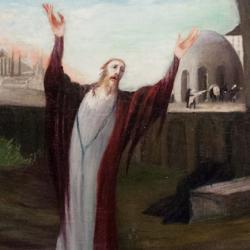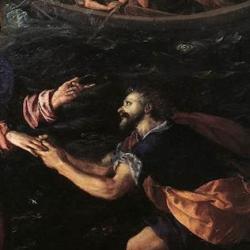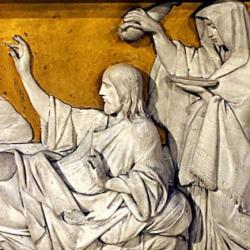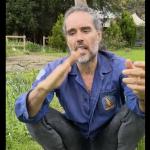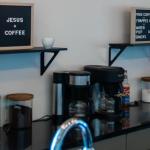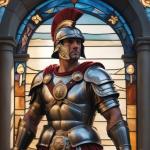INTRODUCTION
Jesus enters the temple twice. The first time, He symbolically destroys the temple, pronounces it a robbers’ den, and sets up a ministry of healing ( 21:12 -14). When He comes back the following day, the priests and elders go on the attack ( 21:23 ). Jesus gave them an opportunity to repent, and they did not. After a lengthy, contentious session in the temple ( 21:23-23:39 ), He leaves the house for the last time (24:1).
THE TEXT
Now in the morning, as He returned to the city, He was hungry. And seeing a fig tree by the road, He came to it and found nothing on it but leaves, and said to it, ‘Let no fruit grow on you ever again.’ Immediately the fig tree withered away . . . .” (Matthew 21:18-46).
WITHERED FIG TREE
In Mark, the story of the fig tree frames Jesus’ action in the temple (Mark 11:12 -24), which makes it clear that the fig tree represents Israel or the temple (cf. Deuteronomy 8:8; 1 Kings 4:25 ; Jeremiah 5:17 ; 8:13 ). Israel has become a fruitless people, capable only of producing Adamic fig leaves (Genesis 3:7). Jesus curses the fig tree as He will curse the Jewish leaders (ch. 23), and He assures His disciples that they have the same power in prayer to remove the mountain of Jerusalem if the ask in faith ( 21:21 -22).
BY WHAT AUTHORITY?
Jesus returns to His ministry in the temple. He has set up His kingdom work at the very heart of Judaism, but the priests and elders want to see some credentials (v. 23). They set a trap for Jesus; if he says He acts by human authority He will undermine Himself, but if He claims divine authority the priests will have grounds for acting against Him. Jesus responds to their question with a question of His own, setting a trap for the trappers (vv. 24-26). But Jesus is not only setting a trap. His authorization to act in the temple comes from His baptism by John. At His baptism, the Spirit descends on Jesus and Father declares Him to be the beloved Son, the heir of His Father’s kingdom and house ( 3:17 ). John’s baptism, which is a heavenly baptism, qualifies Jesus to order the temple.
TWO PARABLES OF THE VINEYARD
Jesus follows with two parables about the inversions of His kingdom. Both are directed at the Jewish leaders, and both make use of the image of Israel-as-vineyard (cf. Psalm 80; Isaiah 5). In the first, the Jewish leaders are represented by the son who eagerly promises to work in the father’s vineyard, but then fails to go; tax-gatherers and prostitutes are figured by the second son, who initially refuses to work for his father but later goes. “The last shall be first, and the first last.” The second parable is a compressed record of Israel ’s history. Yahweh lent Israel a kingdom and a land, and expected Israel ’s leaders to produce fruit in it. But when Yahweh sent servants, the prophets, to collect the fruit, the tenants of the vineyard refused and abused the servants. When the son, Jesus, arrives, the tenants – the leaders of Israel – plan to kill Him. The result is that the kingdom/vineyard is taken from the leaders of Israel and given to another nation, ultimately to the church (v. 43). Jesus tells this parable to the priests and elders who are standing right in front of Him, and tells the parable publicly. It is not calculated to win friends, and the Pharisees go away and ironically fulfill the parable by making plans to seize Jesus.






